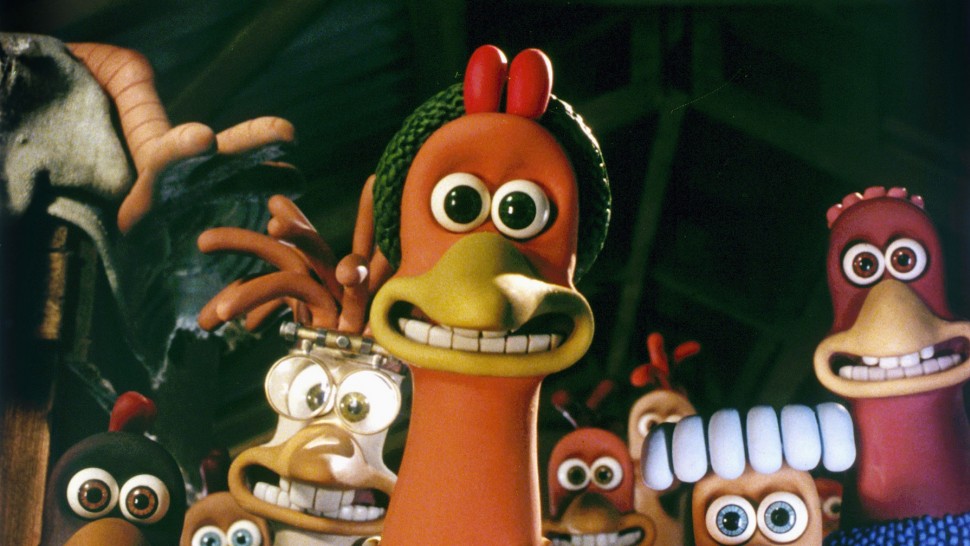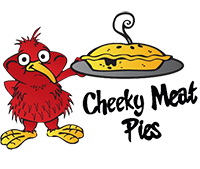The stop-motion animated movie Chicken Run came out in 2000. It was made by Aardman Animations and directed by Peter Lord and Nick Park. It’s about a group of chickens in England in the 1950s who try to get away from a cruel egg farm. With its interesting characters, funny jokes, and touching message, Chicken Run has become a beloved family movie that still makes people laugh.
The Story
Chicken Run is set on the greedy Tweedys’ Yorkshire egg farm. The chickens have a terrible life because they have to lay eggs all the time and are always afraid that they will be killed and eaten. The chickens keep trying to get away, led by the sassy Ginger, but the Tweedys and their mean dogs stop them every time.
Things change when Rocky, a rooster from America, crash-lands into the farm. Rocky claims he can fly, so Ginger blackmails him into helping teach the chickens how to fly so they can finally escape. After many failed flying attempts, Ginger soon realizes that their dreams of escape are dashed since Rocky cannot actually fly on his own.
When all hope seems lost, an old rooster named Fowler tells Ginger stories about the Royal Air Force that give her hope. The chickens secretly put together parts to build an airplane that will fly them out, while Mrs. When Tweedy buys a pie-making machine to turn the farm into a chicken pot pie factory, the chickens speed up their plans to get away. In the exciting ending, the chickens take off in their homemade plane from the farm to freedom.
The Characters
At the heart of Chicken Run are memorable characters that people care about. Ginger is the brave and quick-thinking leader of the chickens. Her desire to escape moves the story forward. Rocky is the charming rooster who pretends to be the chickens’ savior but is actually a fake. Their relationship changes over the course of the movie.
The supporting characters add humor and emotion. Nick and Fetcher are the shady rats who aid the chickens. Babs is the ditzy, knitting chicken. Bunty is the no-nonsense, argumentative one. Fowler is the elderly RAF veteran who reminisces about his past. And the nefarious Tweedys represent the oppressive forces that the chickens rally against.
The Themes
On the surface, Chicken Run is an entertaining animated caper about some plucky chickens. But at its core, the film explores themes of freedom, oppression, and cooperation that resonate deeply. The chickens’ desire for liberation from the restrictive farm parallels many human struggles against unjust social systems. Their ultimate escape requires teamwork, courage, and ingenuity.
The film also satirizes the British class system and wartime films through its posh chicken characters and Fowler’s WWII references. While being very British in sensibility, the story has a universal message about fighting oppression through solidarity.
The Humor
A huge part of what makes Chicken Run so enjoyable is its constant humor. Much of it stems from creatively framing real chickens as characters in a prison escape film. The film is chock-full of funny visual and verbal gags. Sight gags like chickens knitting, wearing glasses, and digging escape tunnels are hilarious. puns and witty banter between characters add to the amusement.
Reminiscent of old Hollywood comedies, the funny moments come from putting proper British chickens in very silly situations. The absurdity of the chickens’ elaborate plans to break free provides laugh-out-loud moments for both kids and adults. Even the dark undertones of the story are counterbalanced by an upbeat, tongue-in-cheek tone.
The Animation
Central to Chicken Run’s unique magic is Aardman’s signature stop-motion animation. Using plasticine models, Aardman’s animators hand-craft each scene one frame at a time. This gives the film a charmingly tactile, handmade artistry. The animation allows the humorous gags and eccentric character designs to feel delightfully vivid and real.
From Ginger’s facial expressions to the chickens’ hilarious slapstick antics, Aardman’s skillful animation gives the film an engaging warmth and personality. The exciting action sequences also showcase their technical wizardry. Chicken Run demonstrates how stop-motion can create resonant stories through imaginative artistry.
Enduring Popularity
Upon release, Chicken Run was a critical and commercial hit, becoming the highest-grossing stop-motion film ever at the time. It appealed to both adults and children with its mix of funny gags, likable characters, and uplifting story. The film was particularly popular in the United Kingdom, where Aardman’s humor and sensibilities naturally resonated.
More than 20 years later, Chicken Run remains one of Aardman’s most popular productions. For animation fans, it represents the pinnacle of claymation art. Families continue to enjoy its timeless story, memorable characters, and visual delights. With continued home video releases and TV airings, Chicken Run looks to be a classic that keeps generations of viewers clucking with joy.

Summary[]
The plot centers on a group of British chickens who see a smooth-talking Rhode Island Red named Rocky as their only hope to escape from certain death when the owners of their farm decide to move from selling eggs to chicken pies.
Plot[]
Mr. and Mrs. Tweedy run a failing British chicken farm in Yorkshire; the chickens are caged in the style of a World War II prison camp with a high fence and barbed wire, and two dogs patrol the grounds. Chickens that fail to produce enough eggs are slaughtered for food. Frustrated at the generated by the farm, Mrs. Tweedy comes up with the idea of converting their farm into the automated production of chicken pies. Ginger, a chicken, has long dreamed of getting away with the help of her hen friends Babs, Bunty, and Mac, as well as two shady rats named Nick and Fetcher who help her get things from the Tweedys to help her plans. However, she is always caught and put into solitary confinement. While thinking of a new plan, Ginger witnesses a Rhode Island Red cockerel fly over the fence and crash into one of the coops, spraining his wing. They help hide him from the Tweedys and take care of his wing. Ginger and the other chickens find out that his name is Rocky. Ginger really likes that Rocky can fly and begs him to help her and the other chickens learn to do the same. Rocky is shy, but he tries to help train the chickens anyway, even though he can’t fully show what he can do because his wing is broken. Meanwhile, Mr. Tweedy begins assembling their pie-making production line, and the chickens food ration is doubled to fatten them. After Ginger and Rocky get into an argument, Rocky holds a morale-boosting dance party during which it is revealed that his wing is healed. Shortly after, Mr Tweedy finishes assembling the machine, and puts Ginger in it for a test run. Rocky infiltrates the machine to save her, the two eventually escape and sabotage the machine, buying the chickens more time to escape the farm. The next day, Ginger, much to her devastation, discovers that Rocky has left, leaving behind part of a poster that reveals he is in fact part of a “chicken cannonball” act with no ability to fly on his own. When Ginger thinks there is no way out, old rooster Fowler’s stories about his time in the Royal Air Force (RAF) give her the idea to build an airplane and leave the farm. All the chickens, with help from the rats, secretly assemble the required parts for the plane from their coops while racing against Mr. Tweedys repairs. While travelling the countryside, Rocky sees a billboard for Mrs. Tweedys Chicken Pies and is inspired to go back to help. With the machine now fixed, Mrs. Tweedy insists that Mr. Tweedy gathers all the chickens, but the chickens are ready to escape. They knock Mr. Tweedy out and tie him up long enough to complete the assembly of their plane. As the plane approaches the take-off ramp, Mr Tweedy is able to knock over the ramp before being knocked out; Ginger races to reset the ramp, but a now-alerted Mrs Tweedy attacks her. Mrs Tweedy is subdued by Rocky, who leaves with Ginger by holding onto the runway lights, which have been snagged by the departing plane. Whilst taking off, Mrs. Tweedy chases them down and catches onto a Christmas light strand snagged in the wheels. Mrs. Tweedy climbs the strand, intent on chopping Gingers head off, while Ginger races to sever the strand. Ginger manages to trick Mrs. Tweedy into cutting the strand with her hatchet, sending her straight into the safety valve of the pie machine and plugging it, causing the machine to build pressure in its gravy line and explode, destroying the machine and the barn. Mr Tweedy reminds her of his warnings that the chickens were organized and, now fed up with his wifes aggressive and abusive behaviour towards him, pushes the barn door down on top of her. The chickens celebrate their victory after defeating the Tweedys while Ginger and Rocky kiss each other. Later, as the film concludes, the chickens have found a quiet island, which they call Chikin Sanctuary, where they can enjoy their freedom and raise their chicks, while Ginger and Rocky have developed a romantic relationship. Nick and Fetcher decide to start their own chicken farm for eggs but disagree on whether the chicken or the egg came first.
Why Chicken Run is the greatest film ever made
FAQ
What is the meaning behind Chicken Run?
Chicken Run and its sequel have been noted for their depiction of feminism, revolution, Marxism, veganism and fascism. According to Florentine StrzeIczyk, Chicken Run points to the way that masculinity and femininity are mediated in popular film genres. It also received attention for its female-led cast.
What is the premise of Chicken Run?
Nick and Fetcher, two rats that have been helping the chickens throughout the escape, decide to set up their own egg farm, but they fall into a circular ….
Is Chicken Run inappropriate?
Parents need to know that although Chicken Run is rated G, it may be too scary or hard to follow for younger or sensitive kids.
